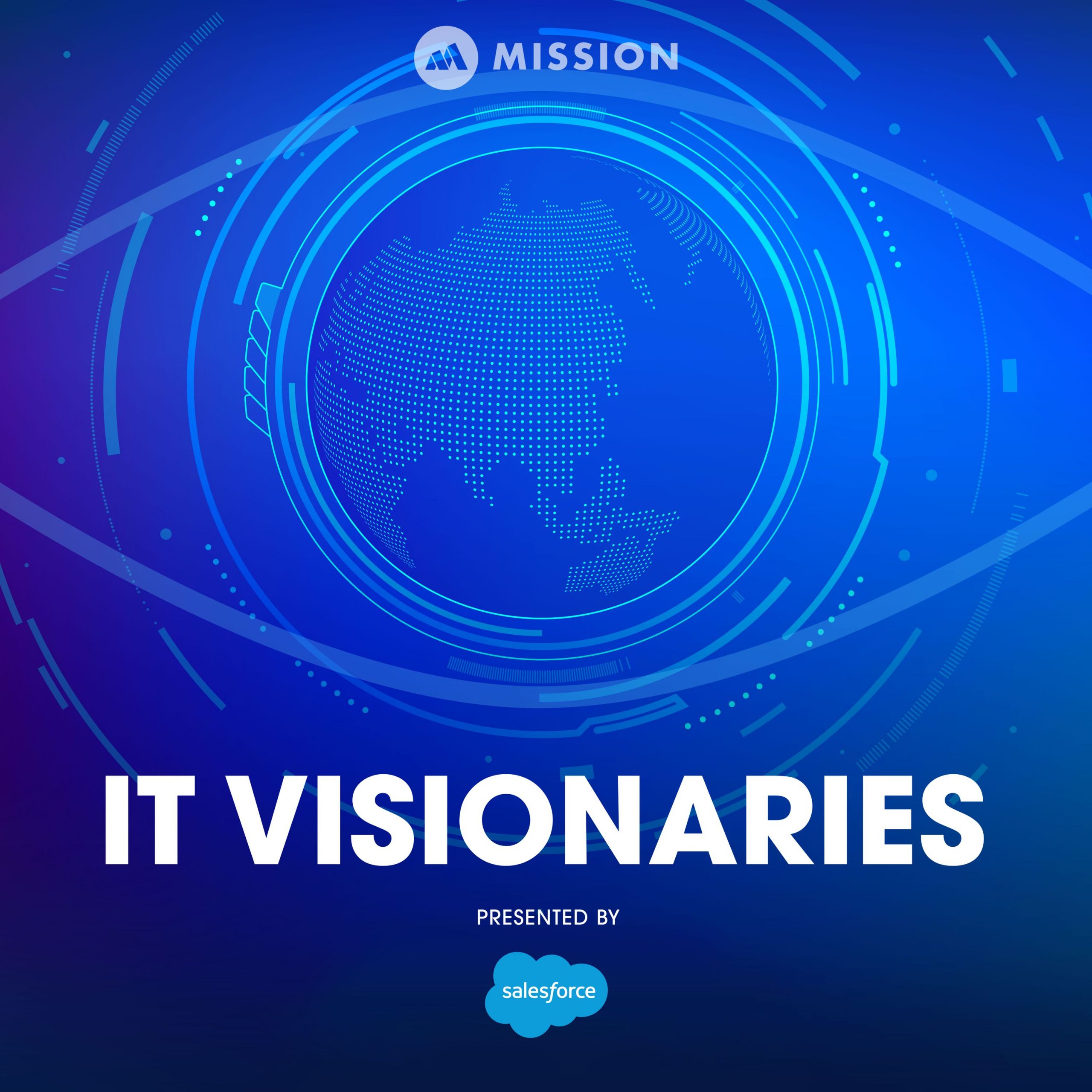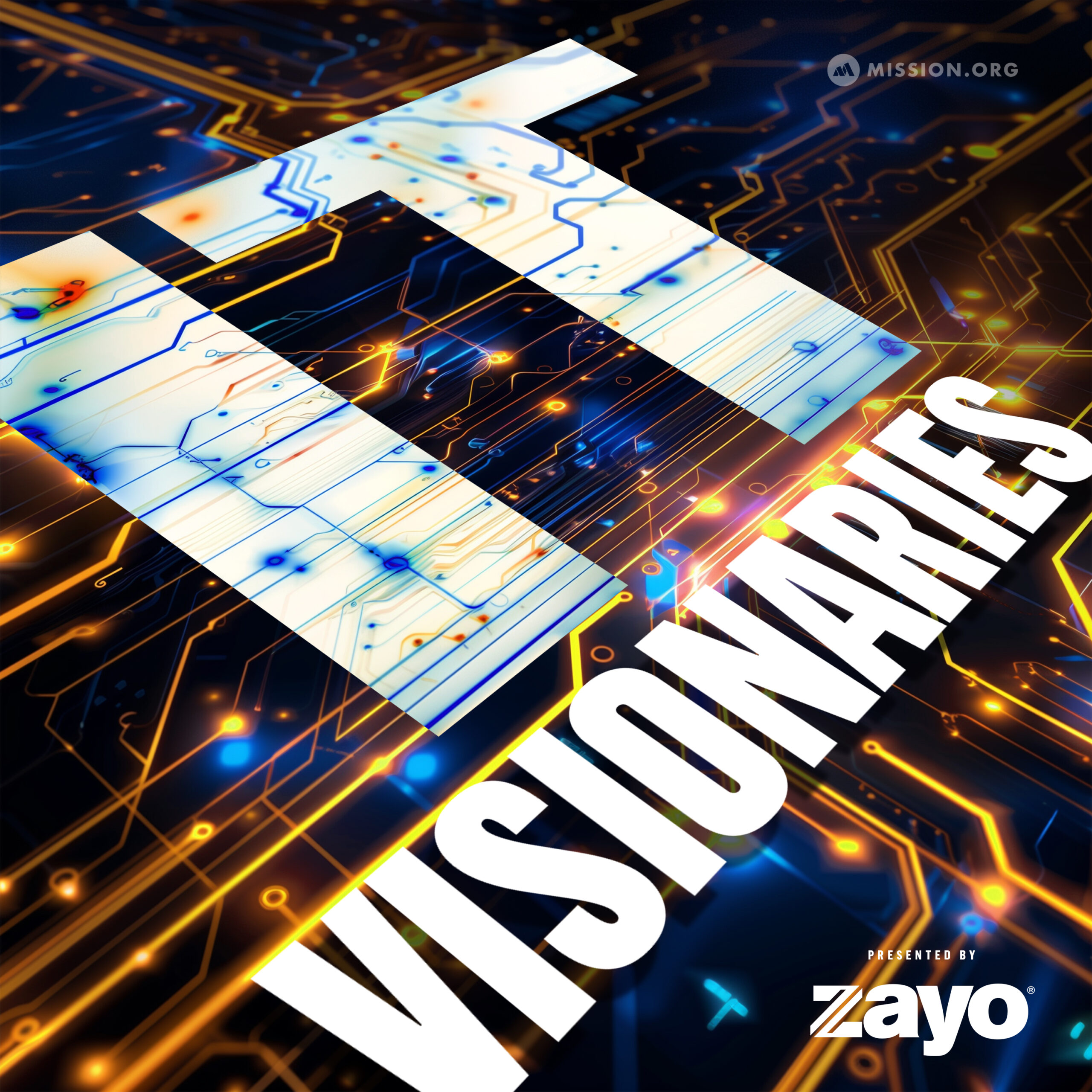Much like a snowflake, no two companies are alike. After all, something has to separate you from your competition — from mission statement, to products and services, to customers, nothing in the marketplace is exactly like the other.
But regardless of what industry you serve, more than likely you’re dealing with many of the same issues that your peers are. From all sides of the C-Suite, every executive is dealing with similar obstacles. Maybe that’s designing an infrastructure to support remote work, or navigating a treacherous journey to the cloud, or fixing a workplace culture. No matter what the issue is, there are more similarities than we may think.
On a recent episode of IT Visionaries, special guest host, Neeracha Taychakhoonavudh, the Executive Vice President, Global Customer Success & Strategy at Salesforce, was joined by two industry experts representing very different parts of the marketplace. The result is a conversation which brings together two executives from two different roles for a look at what makes their challenges similar, but different.
Tony Wells, is the Chief Brand Officer of USAA, and Michael Smith, is the CIO of Estée Lauder, and on this episode, the two discuss why they believe that companies will inevitably embrace a hybrid work environment and how to bring employees back safely. They also touch on how to build a tech-first culture, and the need for IT and other departments to work together.
Main Takeaways
- Deep Thinkers: Non-technology executives need to constantly be thinking about how current or future technology could be a disruptor to their current business model. It’s important for members of the C-suite to understand the challenges they face, but also to work together to attack those challenges. Working with the CIO on a day-to-day basis to help optimize some of the company’s responsibilities will pay dividends in the long-run.
- What do you Value?: The younger workforce we see today puts value in things other than just a steady paycheck and benefits. Now it’s incumbent on the employer to provide a state-of-the-art facility that can best set up employees to succeed, but they have to ensure that the value and image of the brand aligns with their workforce.
- Is That a Hybrid?: The future model of work will include both a physical office and provide employees with the ability to work remotely and with distributed teams. If companies are going to retain and recruit talent, that is likely the only model that will draw them in.
Article
Much like a snowflake, no two companies are alike. After all, something has to separate you from your competition — from mission statement, to products and services, to customers, nothing in the marketplace is exactly like the other.
But regardless of what industry you serve, more than likely you’re dealing with many of the same issues that your peers are. From all sides of the C-Suite, every executive is dealing with similar obstacles. Maybe that’s designing an infrastructure to support remote work, or navigating a treacherous journey to the cloud, or fixing a workplace culture. No matter what the issue is, there are more similarities than we may think.
On a recent episode of IT Visionaries, special guest host, Neeracha Taychakhoonavudh, the Executive Vice President, Global Customer Success & Strategy at Salesforce, was joined by two industry experts representing very different parts of the marketplace. The result is a conversation which brings together two executives from two different roles for a look at what makes their challenges similar, but different.
Tony Wells, is the Chief Brand Officer of USAA, and Michael Smith, is the CIO of Estée Lauder, and on this episode, the two discuss why they believe that companies will inevitably embrace a hybrid work environment and how to bring employees back safely. They also touch on how to build a tech-first culture, and the need for IT and other departments to work together.
One of the early themes of the conversation centered around communication, and how non-technology personnel can best learn from their IT brethren.
“I would encourage non-technology executives to really think deeply about how technology might not only disrupt their industries or their firms, but even just the small day-to-day responsibilities that their teams have,” Smith said. “A lot of times we think about large industry disruption, but a CIO can help an organization think about how to optimize day-to-day responsibilities.”
But Wells, hailing from a background in the Marines and a non-technical heritage, had a different view on how others could best collaborate with their co-workers.
“It’s an interesting challenge,” Wells said. “When I first started in the brand function, IT would go do something, roll out a new website, bring a new technology, and then there’d be this big unveiling. But now I think it’s a deep collaboration. There’s been a lot of articles written about how marketing or the brand function is controlling more and more of the IT budget, but we know that the IT experts have the knowledge to implement this. In our case, we have some joint agile teams that are working side by side.”
From there, the conversation shifted from how employees can best communicate with one another, to how younger employees, such as generation Z, are entering the workforce with different values than their predecessors.
“Our brand has to resonate with them,” Wells said. “In corporate America, there’s a lot of things that we’re going to have to look hard at: employee health, safety, and welfare. Brand purpose, I think, is paramount and king. You need the ability to communicate your purpose and make sure your employees, no matter what their age or background or demographic, feel like they belong and feel heard and that they’re included.”
But one of the ways the consumers are building relationships with brands, and creating these values is through digital experience. Estée Lauder, which is a high-touch and personal experience with consumers, has had to find ways to alter their in-person experiences over the last year.
“It is a very personal purchase,” Smith said. “Our interaction with consumers is extremely high-touch — sitting down with a beauty adviser and really getting to know each other. Now, technology is a key enabler to being able to create something that is very unique to each individual. What we’ve done with Clinical Reality for Clinique, we can analyze the skin digitally and make a specific, personalized recommendation for the customer’s regimen. So, it’s a new world. And I think for a beauty consumer, this has to be super exciting.”
To hear more about some of the commonalities and differences between these two members of the C-Suite, check out the full episode of IT Visionaries!



